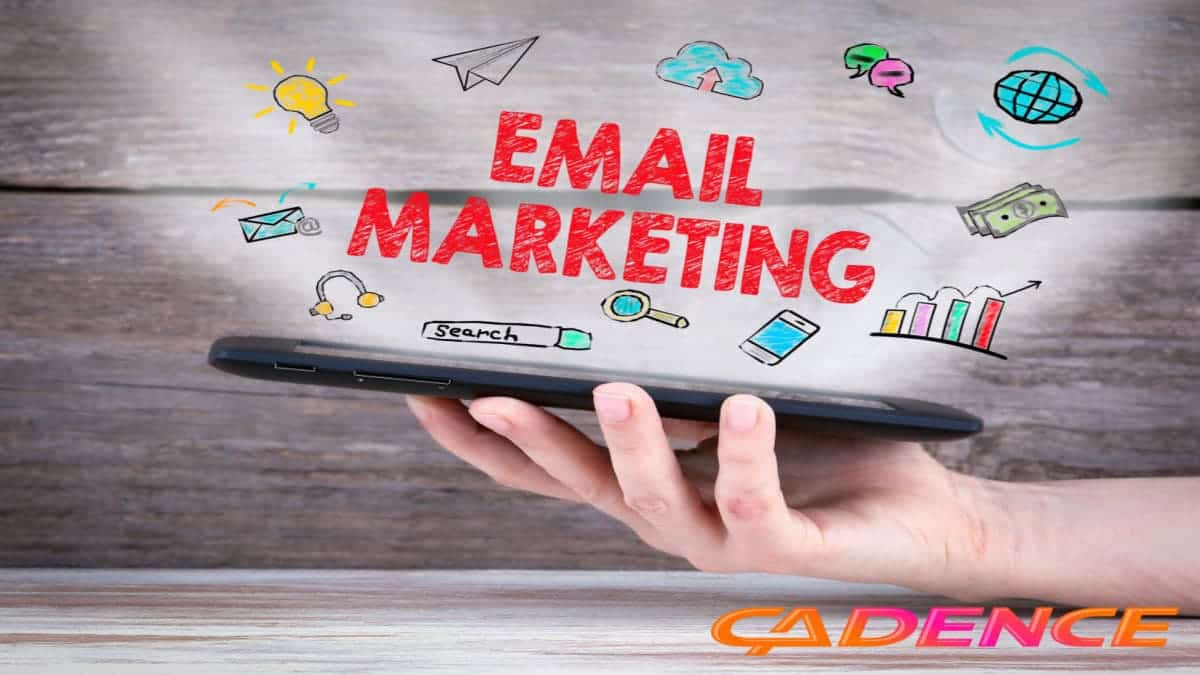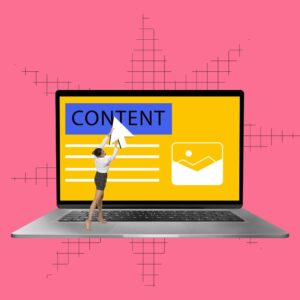Building your digital marketing strategy for the future requires you to investigate the many available channels that allow you to connect with your ideal audience and build on those relationships. One of the most beneficial channels available is email marketing.
What is Email Marketing?
Email marketing is one of many digital marketing strategies that involves collecting email addresses of prospective leads and sending them a variety of email messages, including:
- Introductory messages
- Informational emails
- Conversational emails
- Marketing emails, etc.
These messages will vary in content and tone depending on the nature of your message. Whether it be cold email marketing or marketing messages that the lead has opted to receive, these messages are intended to generate brand awareness and start building a relationship with the lead. When nurtured right, this relationship can lead to repeat customers, long-term brand loyalty, and even new leads brought in by loyal customers.
The Benefits of Email Marketing
When determining whether email marketing is worth adding to your digital marketing strategy, there are several things you’ll want to consider.
If you search “benefits of email marketing” on any search engine, one of the first notable results you’ll likely encounter is the average email marketing ROI. Your ROI refers to your overall return on investment. This is the amount of money you’ll see back after you start investing in this channel. While it may take some time and a consistent effort, the average email marketing ROI currently stands at $38 for every $1 spent.
Not only does email marketing prove to have one of the highest ROI’s for marketing teams, but it also has several additional benefits:
- Allows you to reach the right people with personalized content
- Improves communications with your audience
- Allows you to provide more value to your audience members
- Generates quality traffic to your website
- Helps build brand awareness/credibility
- Helps with your demand generation
- Allows you to collect valuable consumer feedback
This is by no means a full list of benefits – these are just some of the most notable ones worth considering if you are still on the fence.
What Makes Email Marketing So Effective
If you ask most B2B marketing teams, they will tell you that email marketing works. Not only do 87% of B2B marketing teams say they use this channel to help them generate new leads, but 31% of them stated that this channel makes the biggest impact on their overall revenue.
So, what makes email marketing such an outstanding digital marketing channel? Not only do 86% of B2B consumers prefer to communicate with brands via email, but it’s one of the best ways to get to know your ideal audience on a genuine level.
Whether you choose to approach this channel through cold email marketing or traditional email marketing, there are many opportunities to gather important information on your ideal audience member.
These details allow you to create an email marketing strategy that reaches the right audience at the right time.
Getting Started with Email Marketing
If you’re ready to start reaping the benefits of email marketing, then you’ll want to make sure you take the necessary steps to build your email marketing strategy the right way. Not sure where to start? Here’s a helpful email marketing checklist to help you get started:
Choose Your Email Marketing Service Provider
The first thing you’ll need to do is take adequate time to research different email marketing service providers to find one that suits your needs.
An email service provider (ESP) offers several different services, aside from just the capability to send emails. These services often include:
- Automation
- SMTP relay
- Lead capture forms
- A/B testing
- Email list segmentation, etc.
These are all necessary services if you plan to send the most optimized content to your email subscribers. Just remember, not all ESPs are created equally – so, take your time and research all your options.
Start Building Your Email List
Whether you seek out individuals to message or create interactive content that encourages the exchange of a lead’s email for something of value to them, these lead generation tactics allow you to start gathering email addresses of those who have expressed interest in what you have to offer.
As you collect these email addresses, you’ll want to make sure you are either manually adding them to your ESP or setting up an automated form that enters this information into your ESP for you upon completion of a form.
Make Sure You’re Getting Permission to Continue Sending Messages
After sending an initial cold email or receiving a new email address via an opt-in, you want to make sure you are getting the individual’s express permission to continue sending them both promotional and non-promotional email messages.
While you may have received an initial email list opt-in in exchange for a piece of gated content, that user may not have intended to remain on your list. Therefore, it’s essential always to send a second verification to ensure that you are getting their express permission to continue contacting them.
Monitor Each Campaign You Send
Finally, once you’ve created your campaigns and sent them out, you’ll want to make sure you are monitoring each one for effectiveness. Make sure to keep an eye on metrics such as:
- Open rates
- Click rates
- Click-through rates
- Bounces
- Unsubscribes, etc.
These will tell you whether your email campaigns are working or not, and if they aren’t, you’ll be able to edit them as necessary.
8 Different Types of Email Marketing Messages
Email marketing is an amazing digital marketing channel because it’s so versatile and can help you meet each of your leads’ needs. Emails can be used as an initial touchpoint or a way of nurturing your relationships using personalized messages filled with relevant, educational content that they find useful.
Below are 8 of the most frequently utilized types of email marketing messages used by marketing teams across industries.
1. Introductory Message
These emails are most frequently used by those who choose to utilize a cold email marketing strategy. These messages aim to reach out to prospective leads, introduce yourself, and explain why you are reaching out to them. It’s important to note that these messages shouldn’t be too promotional because that comes off as a tacky sales approach.
You want to use this message to build brand awareness subtly. You don’t want to offer up any special offers or anything that comes off as promotional because you could end up violating email marketing rules and regulations, such as those of the GDPR.
Instead, you want to use this as an opportunity to introduce yourself, and your brand, and offer up an opportunity to network further – whether via social media or further email communications. You want to make sure the email’s tone is upbeat, warm, and professional as well.
2. Welcome Email Campaign
If you’re taking a more traditional approach to email marketing, then you’re letting the leads come to you via an opt-in form of some type. Once a user has chosen to give you their email address, you want to make sure you take the time to acknowledge them and welcome them to your community.
While these can be a simple one-off welcome email, many marketing teams use this opportunity to not only thank new subscribers for joining their list but also talk more about the brand, what they can look forward to as far as content and offers as well as present them with an opportunity to further network with them by visiting your various social media pages.
3. Email Newsletter
An email newsletter is often defined as a one-off message used to update email subscribers on events, recent posts by the brand, and other relevant news. These can be sent out monthly, quarterly, or even annually to keep your readers in the know and allow them to feel as if they are an essential part of the brand, not just another email address.
4. Educational Emails
Educational emails can be used in several different ways. These are an excellent way to share curated resources with your audience to help you build authority within your niche. They can also be used to educate your customers on how to best use your products and even be helpful evergreen pieces used purely to inform readers on things like best practices, different types of “how-to” articles, and more.
No matter your email marketing strategy, you’ll want to make sure you are using education emails because research shows that your consumers want to consume educational content, not promotional content. In fact, one study shows that consumers are 131% more likely to purchase from a brand after they’ve consumed some type of educational content.
5. Promotional Emails
While consumers prefer educational emails to promotional ones, that doesn’t mean there isn’t a time and place for them. For instance, if you have a new product launching or a special deal going into effect, you want to share these special offers with your subscribers. The key to success is to make these emails about your subscriber – not about you making a sale.
6. Re-engagement Emails
If you’ve noticed that certain subscribers have gone inactive and haven’t been opening your messages, then you’ll want to take a moment to acknowledge them and reach out to see how they are doing.
Your consumers want to be treated as people – so when you notice that something may be up with them, reach out and check on them by sending a message acknowledging their absence and offering them some content that they may appreciate. This allows them an opportunity to re-engage with your brand.
7. Survey/Feedback Requests
Customer feedback and reviews are essential to your business. Not only can they be used to boost your SEO efforts, but they can be helpful in your lead-generation efforts. This is because 85% of consumers say that they read online reviews for local businesses in 2020 to help them determine who they should do business with, and 79% of consumers say that they trust online reviews just as much, if not more, than a personal recommendation from a friend or family member.
So, what better way to encourage or gather this information from your subscribers than by sending them a feedback request email or survey email? These can be customer service surveys or product review requests. Not only do these emails encourage your customers/subscribers to give their feedback, but they also help your audience feel that you care about them and their opinions.
8. Confirmation/Thank You Emails
Whether you’ve sent a cold email introducing yourself to a new potential lead and they respond, or someone has decided to download your lead generation PDF, you want to make sure you are acknowledging their efforts by saying thank you or a confirmation that their download is on the way.
These messages help you with relationship building by showing these individuals that you are looking to create a genuine connection, not just out for a sale. Use these messages to show them that you appreciate their message or their download and that you look forward to further networking with them in the future.
Email Marketing Best Practices
As with any digital marketing channel, several email marketing best practices need to be adhered to for your strategy to work. Some of the most important ones include:
Segmenting Your Lists and Personalize Messages Accordingly
Your subscribers crave personalization – and no, that doesn’t mean simply adding their name into the subject line or the beginning of the content. Those who have opted into your email list expect you to treat them as individuals. To do that, you must personalize the content of your messages to each person on your list.
This means taking the time to segment your list into different categories and creating content that is relevant to each one. Categories can include:
- Location
- Age
- Gender
- Job Title/Position
- Interests
- Industry
- Past Purchases/Buying Frequency
- Purchase Interests
- Content Preferences, etc.
The options for segmentation are truly endless, and the best way to collect this information is using an email preference center, which allows your subscribers to set their expectations and what they want to receive.
Spend Adequate Time on Creating the Right Subject Line and Preheader Text
When creating email content, most marketing teams focus on the content within the email, and the subject line and preheader text often become an afterthought.
That means prime pieces of your email real estate are being ignored.
Blank email subject lines don’t look professional, and if you don’t take the time to craft them right, the use of certain words or phrases can lead to your message being sent directly to the spam file. Make sure you are using personalized subject lines and preheader text that doesn’t include spam-triggering words.
Always Include a Call to Action (CTA) Within Your Message
Even if your email is introductory or educational, you want to make sure you include a CTA that encourages the reader to further interact with your brand. These CTA’s can include links to your website or even links to your various social media accounts – allowing readers to further network with you on other sites.
Remember, CTA’s don’t always need to be promotional in nature.
Keep Your Email List Clean and Up to Date
Finally, you want to make sure you are taking the time to clean out and update your email list regularly. While you may have set up an automated workflow that enters new email addresses for you, you must take the time to go through your list and clean out all incorrect addresses that have bounced back or those that are considered inactive (after you’ve attempted to re-engage with them).
If you continue sending to these addresses, they can trigger the many spam filters on various email providers, negatively affecting your overall send score.
Email Marketing Done Right with CadenceSEO
While email marketing can be extremely beneficial, it can also be quite an overwhelming process. This is especially true if you’ve decided to implement a cold email marketing strategy. If you’re looking for some additional help with this type of strategy, then you’re in the right place.
The team at CadenceSEO will help you develop a cold outbound strategy that will help you build lasting relationships and help in your lead-generation efforts.
Curious how we can help you? Then contact us today to learn more!






